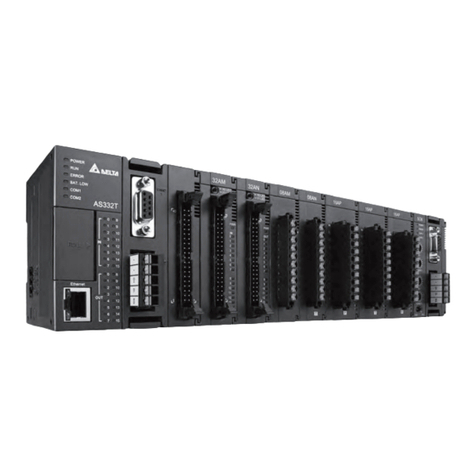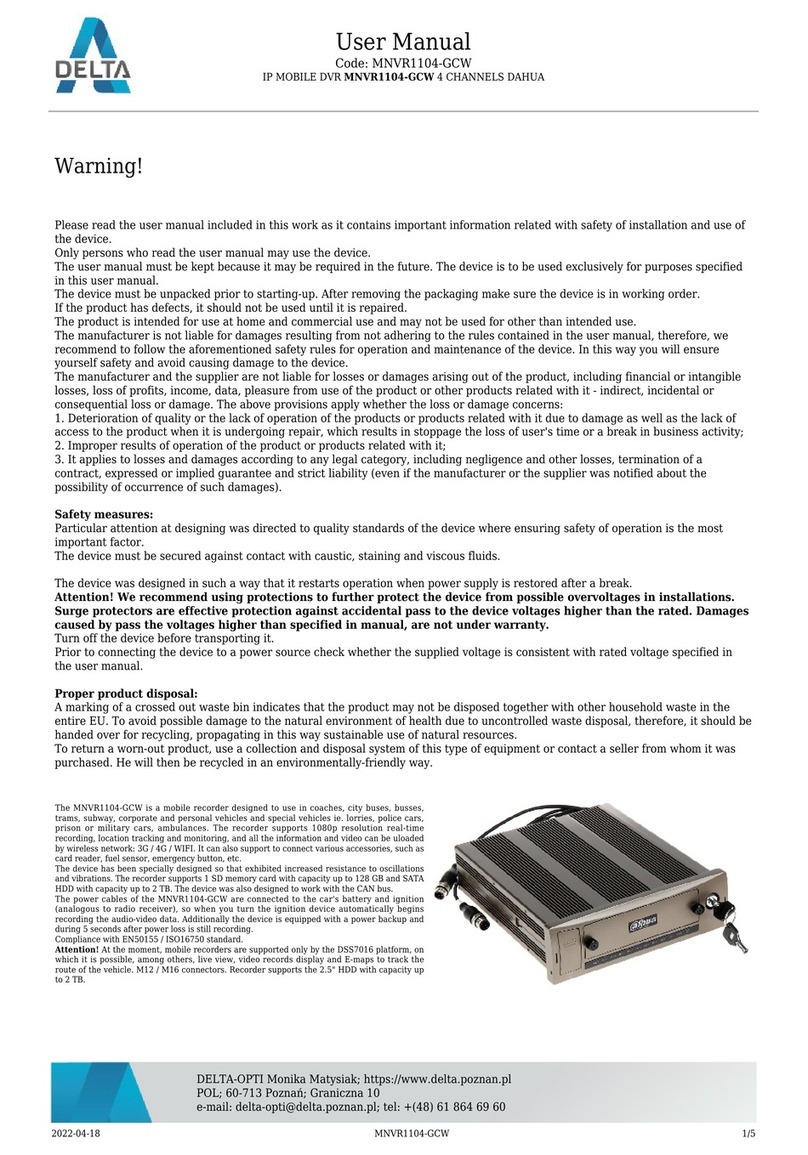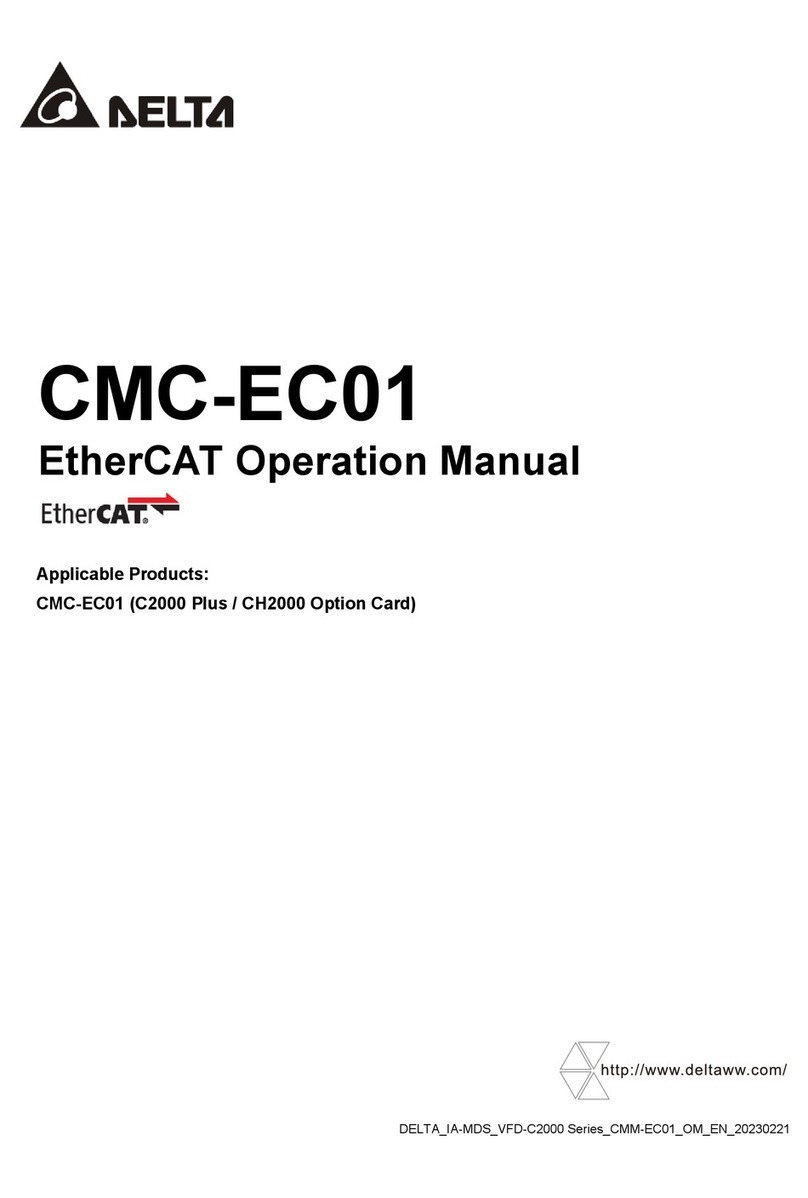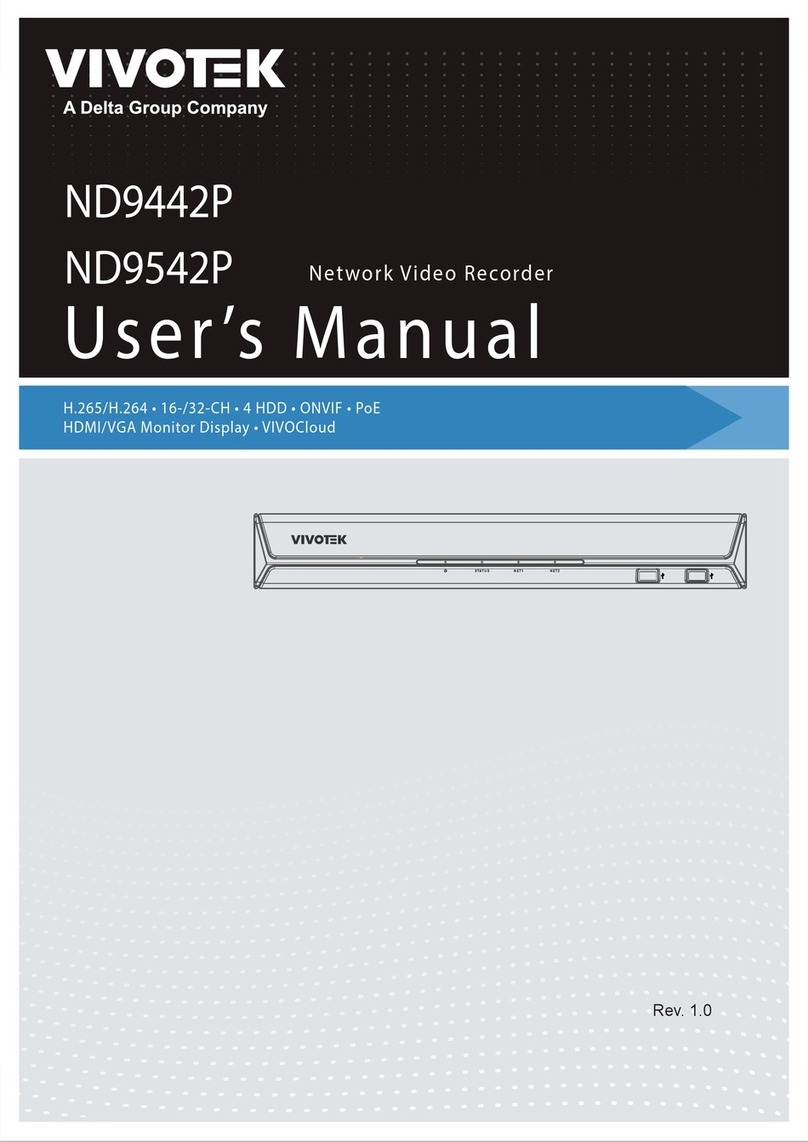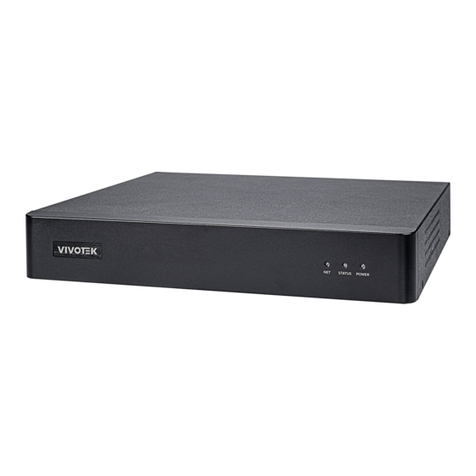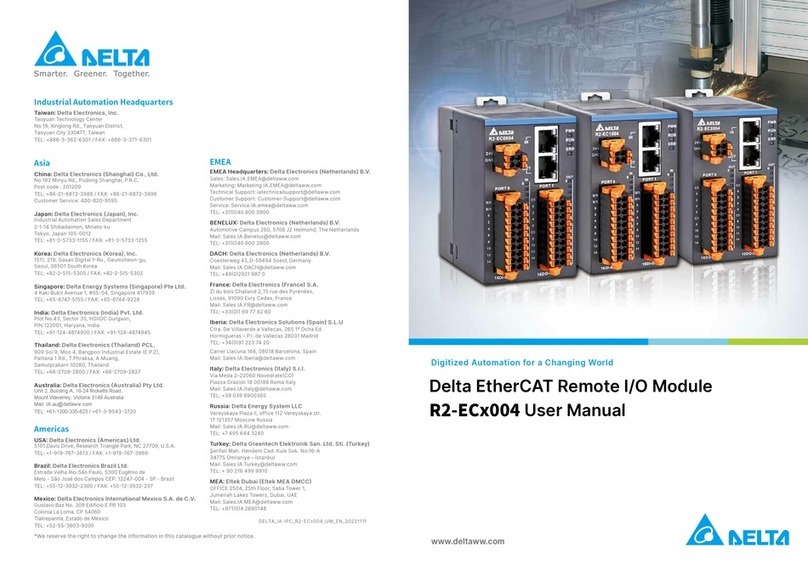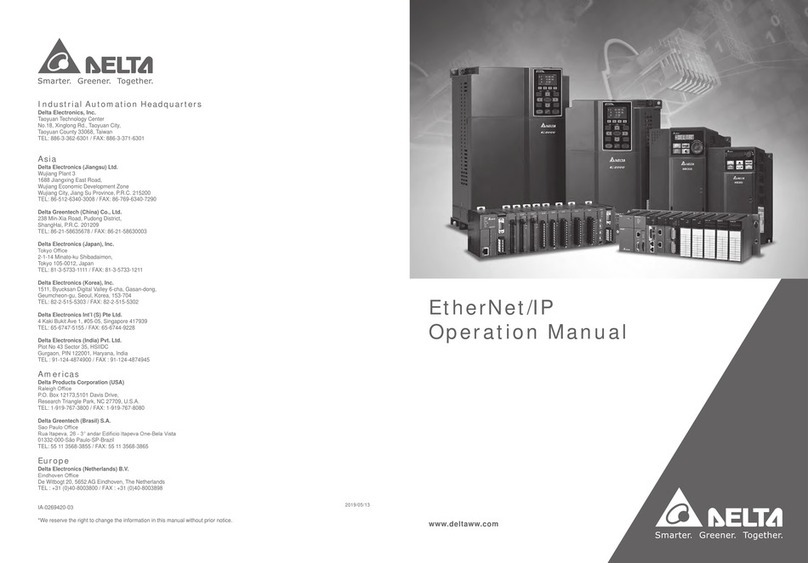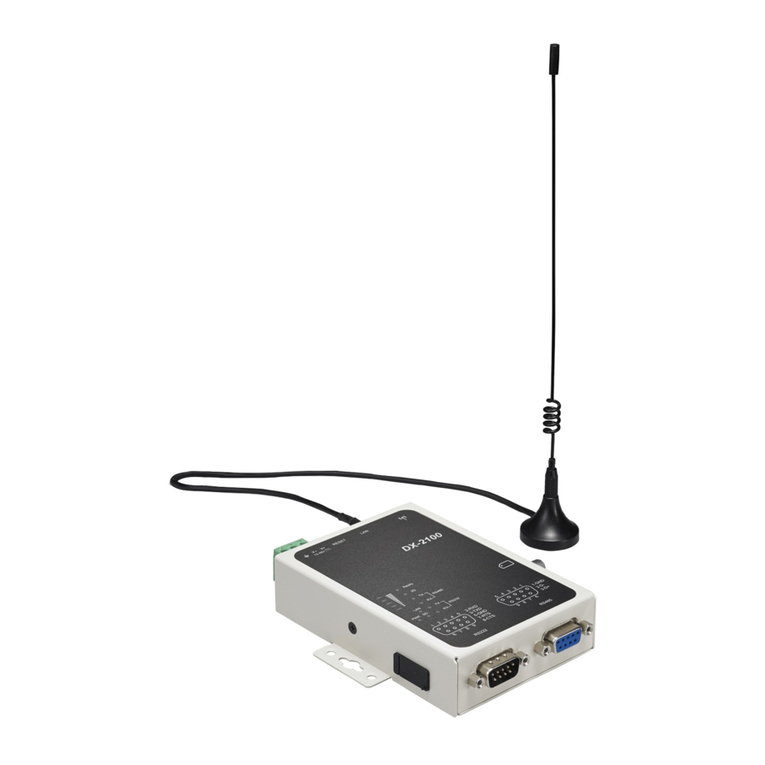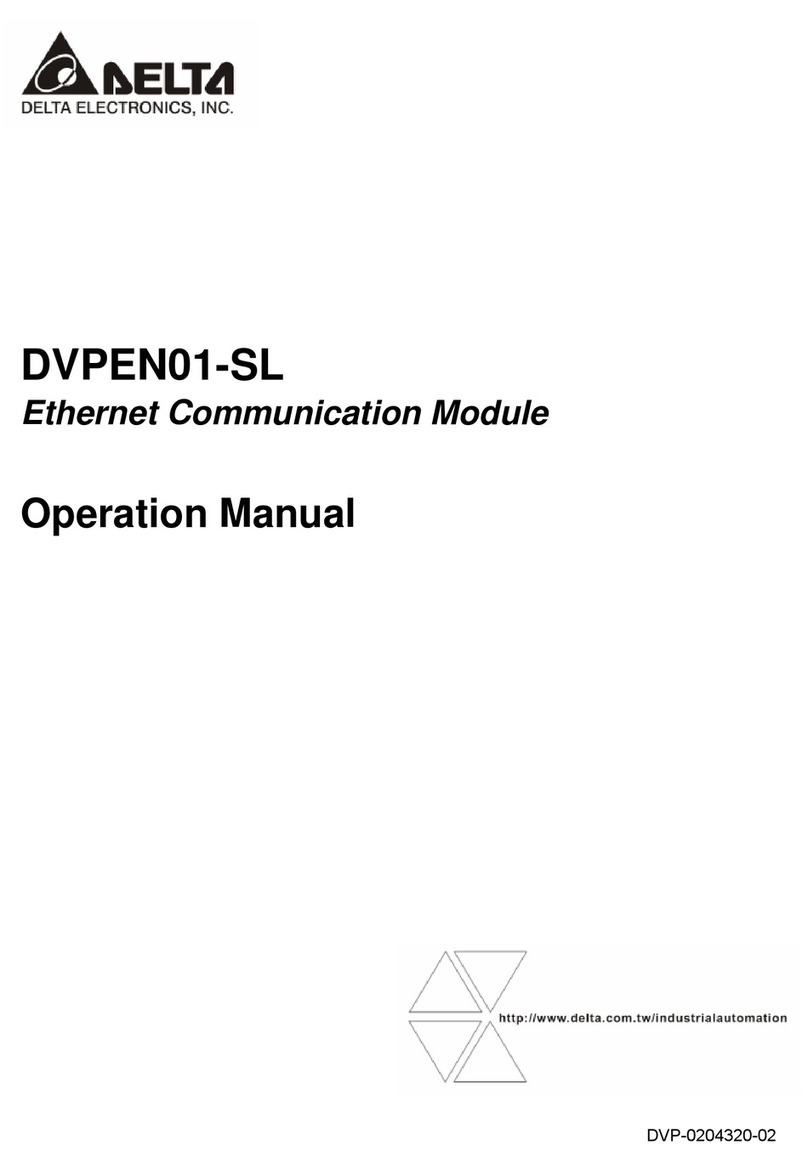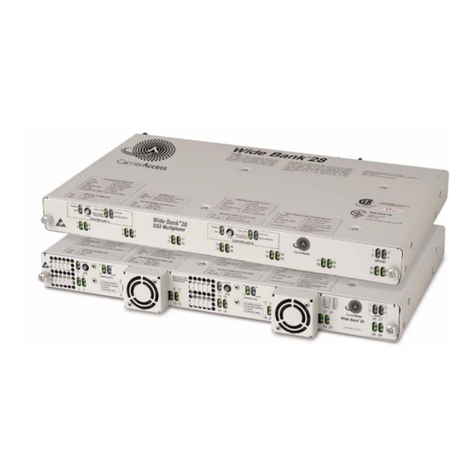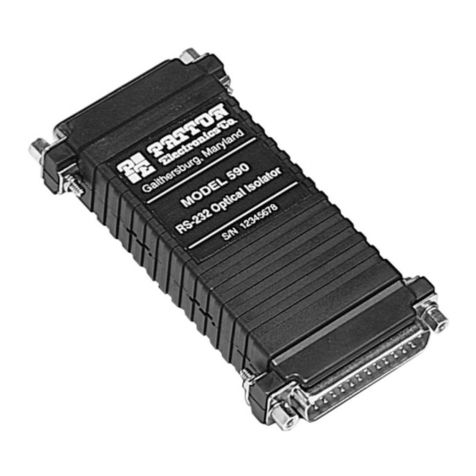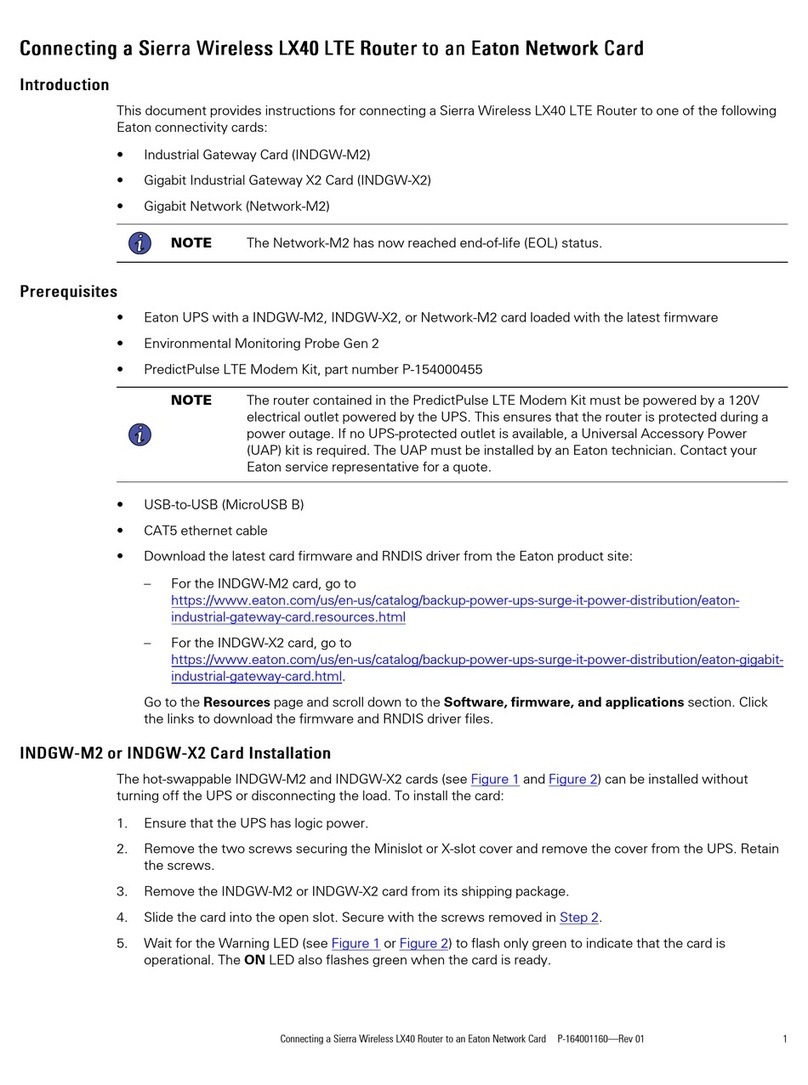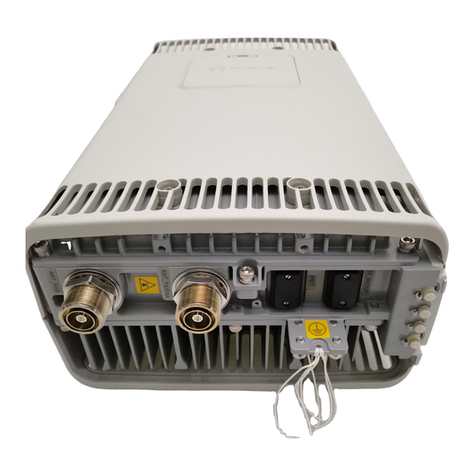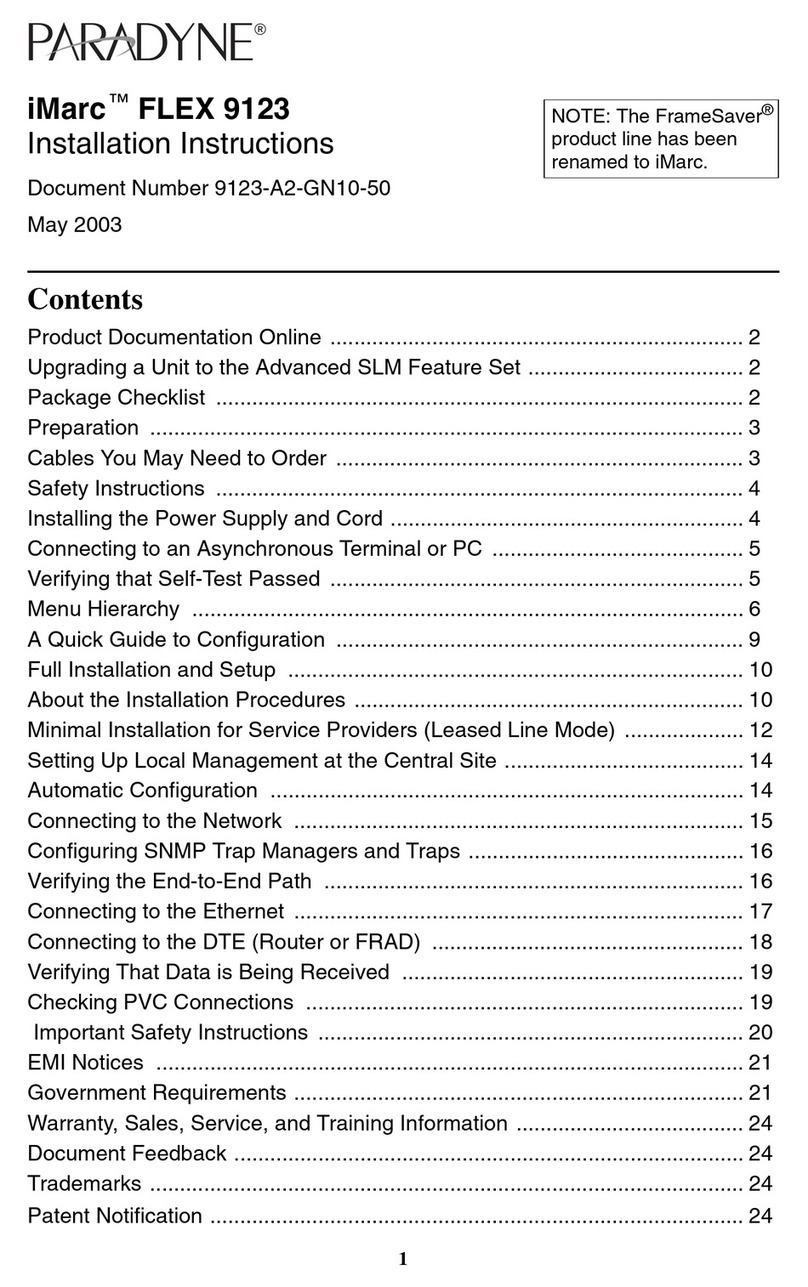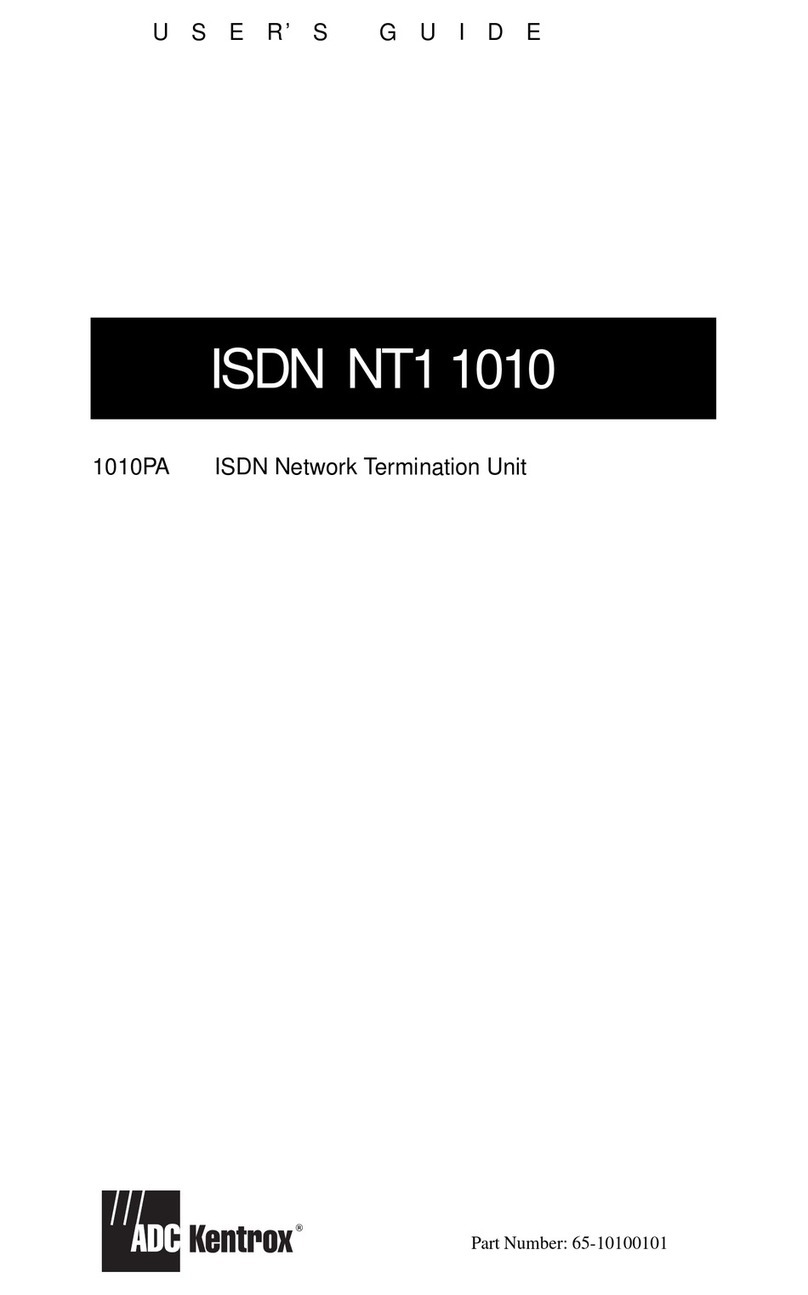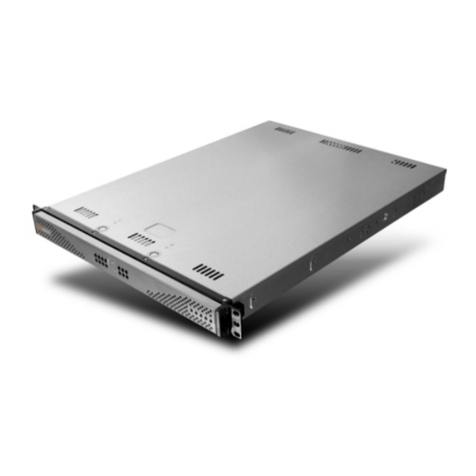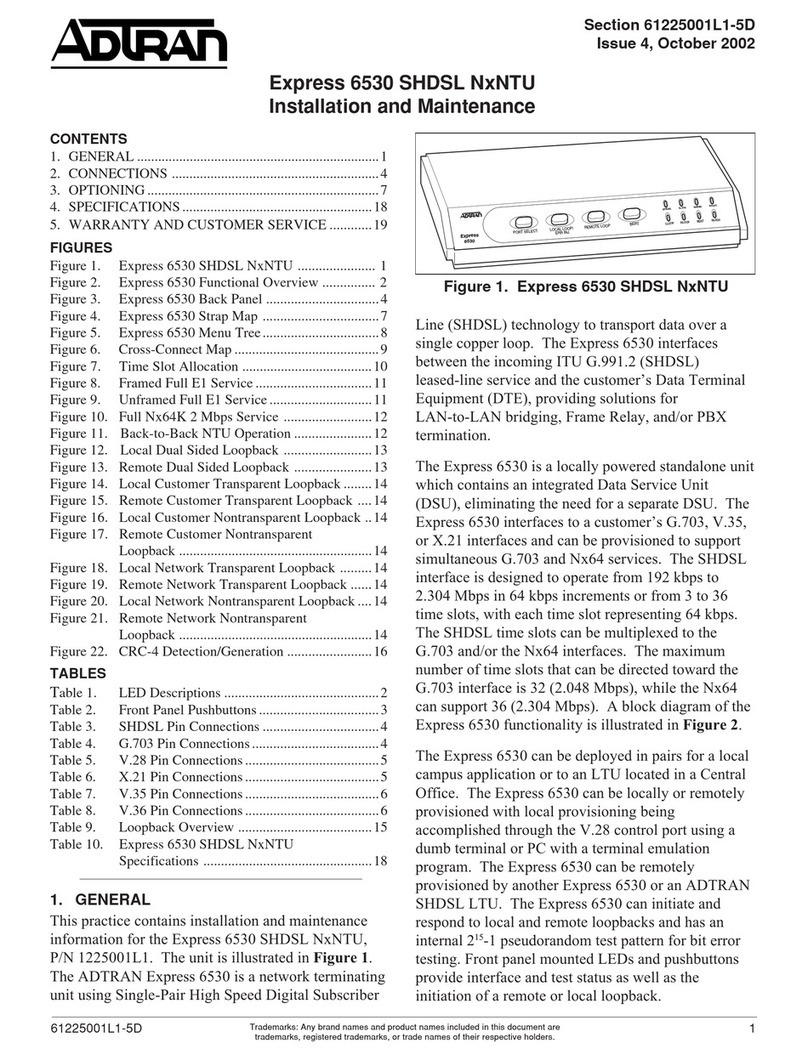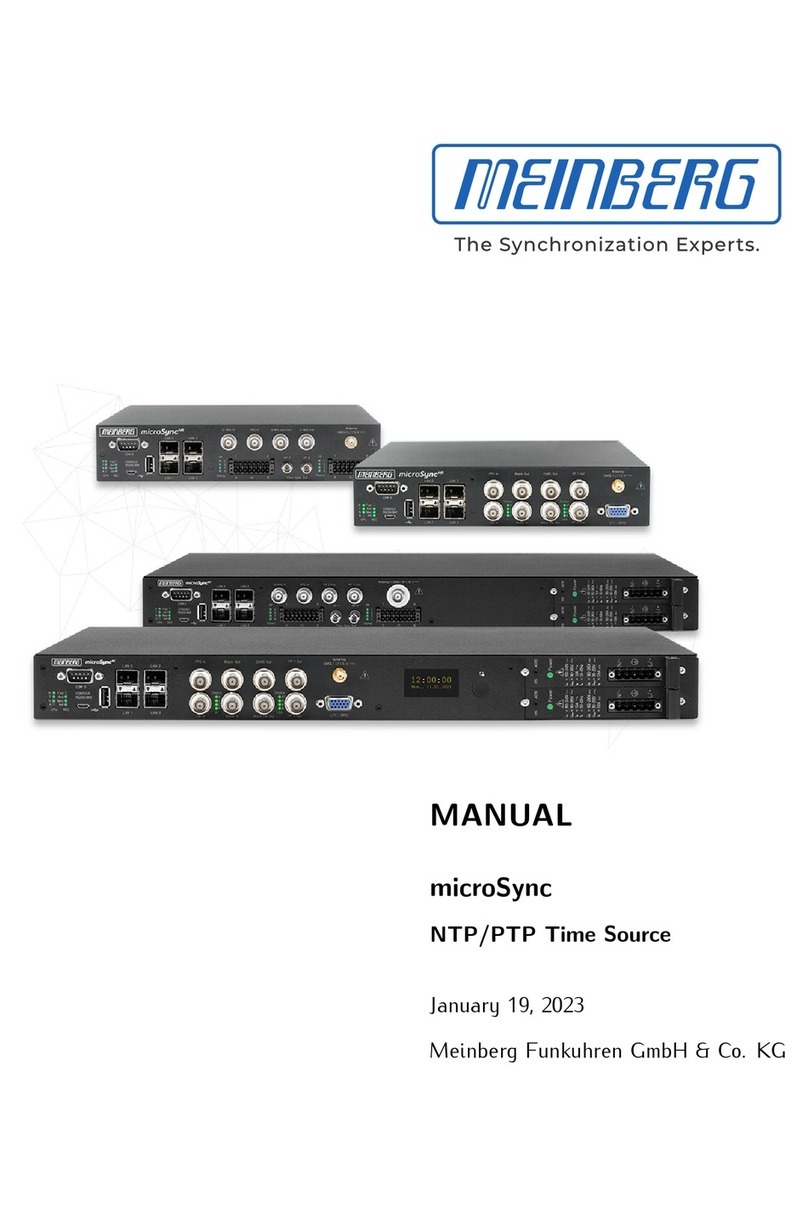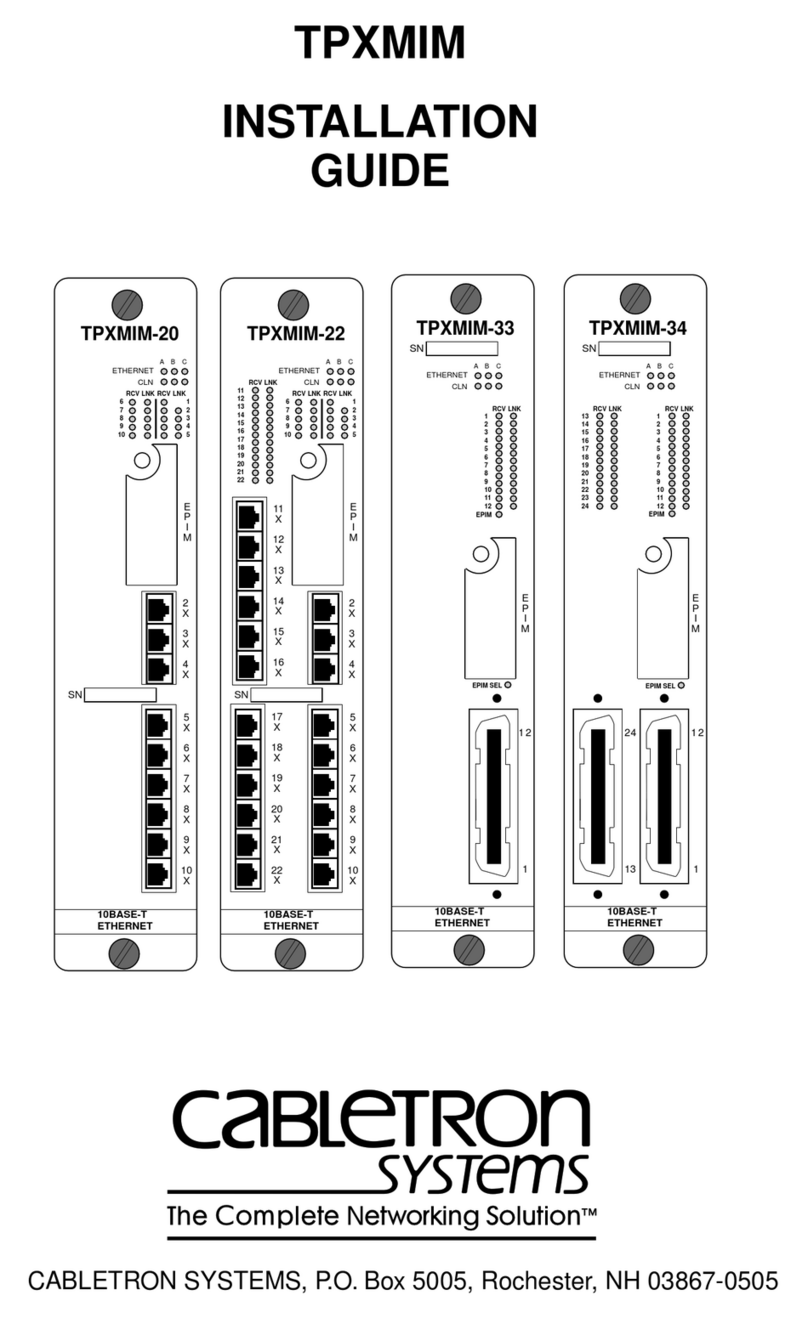
http://www.delta.com .tw/industrialautomation/
5011651101-D2E1
2007-01-15
Analog Output Module
Instruction Sheet
Warning
9Please read this instruction carefully before use.
9Switch off the power before wiring.
9DVP04DA-H2 is an OPEN-TYPE device and therefore should be installed in an enclosure free of
airborne dust, humidity, electric shock and vibration. The enclosure should prevent non-maintenance
staff from operating the device (e.g. key or specific tools are required to open the enclosure) in case
danger and damage on the device may occur.
9DO NOT connect input AC power supply to any of the I/O terminals; otherwise serious damage may
occur. Check all the wiring again before switching on the power.
9DO NOT tough any terminal when the power is switched on. DO NOT touch any internal circuit in 1
minute after the power is switched off.
9Make sure the groud terminal is correctly grounded in order to prevent electromagnetic
interference.
Introduction
1.1 Model Explanation & Peripherals
Thank you for choosing Delta DVP series. DVP04DA-H2 is able to read and write data of DVP04DA-H2 analog
signal output modules through FROM/TO instructions given by the program of DVP-EH2 series MPU. The
analog signal output module receives 4 groups of 12-bit digital data from PLC MPU and converts the data into 4
points of analog signals for output in either voltage or current.
The user can select voltage or current output by wiring. Range of voltage output: 0V ~ +10VDC (resolution:
2.5mV). Range of current output: 0mA ~ 20mA (resolution: 5μA).
Nameplate Explanation
04DA-H2 0T6500 001
0V ~ + 10V or 0mA ~ +20m A
Power input specification
Delta PLC model name
Barcode, Serial No., Version
Analog I/O module specification
Model/Serial No. Explanation
1.2 Product Profile (Indicators, Terminal Block, I/O Terminals)
Unit: mm
D - V + I + V +
24V 0V
I + V + I + V + I +
D + COM
8
CH1 CH2 CH3 CH4RS-485
FG FG FGCOM CO M CO M
1 DIN rail (35mm) 6 Terminals
2 Connection port for extension modules 7 Mounting hole
3 Model name 8 I/O terminals
4 POWER, ERROR, D/A indicator 9 Mounting port for extension modules
5 DIN rail clip
1.3 External Wiring
V+
I+
0V~+10V
*2
*3
0mA~20mA
DC24V
CH4 CH4
AC drive, recorder,
scale valve...
AC drive, recorder,
scale valve...
shielding cable *1
shielding cable *1
current output
converter
terminal of
power module
system grounding
class 3 grounding
(100
Note:
1. When performing analog output, please isolate other power wirings.
2. If the ripples at the loaded input terminal are too significant that causes noise interference on the wiring, connect the
wiring to 0.1 ~ 0.47μF 25V capacitor.
3. Please connect the terminal on both the power modules and DVP04DA-H2 to the system earth point and ground the
system contact or connect it to the cover of power distribution cabinet.
4. DO NOT wire empty terminals
Specifications
2.1. Functions
Digital/Analog (4D/A) Module
Voltage Output Current Output
Power supply voltage 24 VDC (20.4VDC ~ 28.8VDC) (-15% ~ +20%)
Analog output channel 4 channels/module
Range of analog output 0 ~ 10V 0 ~ 20mA
Range of digital data 0 ~ 4,000 0 ~ 4,000
Resolution 12 bits (1LSB = 2.5mV) 12 bits (1LSB = 5 μA)
Output impedance 0.5Ωor lower
Overall accuracy
±0.5% when in full scale (25°C, 77°F)
±1% when in full scale within the range of 0 ~ 55°C, 32 ~ 131°F
Responding time 3ms × the number of channels
Max. output current 10mA (1KΩ~ 2MΩ) -
Tolerable load impedance - 0 ~ 500Ω
Digital data format 11 significant bits out of 16 bits are available; in 2’s complement
Isolation Internal circuit and analog output terminals are isolated by optical coupler.
No isolation among analog channels.
Protection Voltage output is protected by short circuit. Short circuit lasting for too long may
cause damage on internal circuits. Current output can be open circuit.
Communication mode
(RS-485)
ASCII/RTU mode.
Communication speed: 4,800/9,600/19,200/38,400/57,600/115,200 bps
ASCII data format: 7-bit, Even bit, 1 stop bit (7, E, 1)
RTU data format: 8-bit, Even bit, 1 stop bit (8, E, 1)
RS-485 cannot be used when connected to PLC MPU.
When connected to
DVP-PLC MPU in series
The modules are numbered from 0 to 7 automatically by their distance from MPU.
No.0 is the closest to MPU and No.7 is the furthest. Maximum 8 modules are allowed
to connect to MPU and will not occupy any digital I/O points.
2.2. Others
Power Supply
Max. rated power
consumption 24VDC (20.4VDC ~ 28.8VDC) (-15% ~ +20%)., 4.5W supplied by external power
Environment
Operation/storage Operation: 0°C ~ 55°C (temperature); 50 ~ 95% (humidity); pollution degree 2
Storage: -40°C ~ 70°C (temperature); 5 ~ 95% (humidity)
Vibration/shock
immunity
International standards: IEC1131-2, IEC 68-2-6 (TEST Fc)/IEC1131-2 & IEC
68-2-27 (TEST Ea)
Control Registers
DVP04DA-H2 analog output module
Model name Set up by the system. DVP04DA-H2 model code = H’6401
reserved CH4 CH3 CH2 CH1
#1
Output mode
setting
Output mode: Default = H’0000
Mode 0: Voltage output (0V ~ 10V)
Mode 1: Voltage output (2V ~ 10V)
Mode 2: Current output (4mA ~ 20mA)
Mode 3: Current output (0mA ~ 20mA)
#2 ~ #5 Reserved
#6
Range of output value at CH1 ~ CH4: K0 ~ K4,000
Default = K0 (unit: LSB)
#10 ~ #17 Reserved
#18
Adjusted OFFSET
value of CH1
#19
Adjusted OFFSET
value of CH2
#20
Adjusted OFFSET
value of CH3
#21
Adjusted OFFSET
value of CH4
Range of OFFSET at CH1 ~ CH4: K-2,000 ~ K2,000
Default = K0 (unit: LSB)
#22 ~ #23 Reserved
#24
Adjusted GAIN
value of CH1
#25
Adjusted GAIN
value of CH2
#26
Adjusted GAIN
value of CH3
#27
Adjusted GAIN
value of CH4
Range of GAIN at CH1 ~ CH4: K-1,600 ~ K8,000
Default = K2,000 (unit: LSB)
#28 ~ #29 Reserved
#30
Error status Register for storing all error status. See the table of error status for more information.
Communication
address setting
For setting up RS-485 communication address. Range: 01 ~ 255
Default = K1
#32
Communication
speed (baud rate)
setting
Default = H’0002. For setting up communication speed: 4,800 / 9,600 / 19,200 /
38,400 / 57,600 / 115,200bps
ASCII data format: 7-bit, Even bit, 1 stop bit (7, E, 1)
RTU data format: 8-bit, Even bit, 1 stop bit (8, E, 1)
b0: 4,800bps b1: 9,600bps (default)
b2: 19,200bps b3: 38,400bps
b4: 57,600bps b5: 115,200bps
b6 ~ b13: reserved
b14: High/low bit exchange of CRC checksum (only valid in RTU mode)
b15: Switch between ASCII/RTU mode. 0 = ASCII mode (default)
b15
reserved CH4 CH3 CH2 CH1
#33
Return to default
setting;
OFFSET/GAIN
tuning
authorization
Default = H’0000. Take the setting of CH1 for example:
1. When b0 = 0, the user is allowed to tune CR#18 (OFFSET) and CR#24 (GAIN)
of CH1. When b0 = 1, the user is not allowed to tune CR#18 (OFFSET) and
CR#24 (GAIN) of CH1.
2. b1 represents whether the OFFSET/GAIN tuning registers are latched. b1 = 0
(default, latched); b1 = 1 (non-latched)
3. When b2 = 1, all settings will return to default values. (except CR#31, CR#32)
#34
Displaying the current firmware version In hex; e.g. version 1.0A is indicated as
H’010A.
#35 ~ #48 For system use.
Symbols
○: latched (when written in through RS-485 communication)
╳: non-latched
R: Able to read data by FROM instruction or RS-485 communication
W: Able to write data by TO instruction or RS-485 communication
LSB (Least Significant Bit): For voltage output 1LSB = 10V/4,000 = 2.5mV。
For current output 1LSB = 20mA/4,000 = 5μA。
Explanations:
1. CR#0: Model name. The user can read the model name from the program and see if the extension module
exists.
2. CR#1: The working mode of the four channels in the analog input module. There are 4 modes for each channel
which can be set up separately. For example, if the user needs to set up CH1: mode 0 (b2 ~ b0 = 000); CH2:
mode 1 (b5 ~ b3 = 001), CH3: mode 2 (b8 ~ b6 = 010) and CH4: mode 3 (b11 ~ b9 = 011), CR#1 has to be set
as H’000A and the higher bits (b12 ~ b15) have to be reserved. Default value = H’0000.
3. CR#2 ~ CR#5, CR#10 ~ CR#17, CR#22, CR#23, CR#28 and CR#29 are reserved.
4. CR#6 ~ CR#9: The output values of CH1 ~ CH4 (range: K0 ~ K4,000; default = K0; unit: LSB)
5. CR#18 ~ CR#21: The adjusted OFFSET value of CH1 ~ CH4 (default = K0, unit = LSB), representing the analog
output voltage or current when the output digital value = 0 after calculation. The adjustable range: -2,000 ~
+2,000.
The adjustable range of voltage: -5V ~ +5V (-2,000LSB ~ +2,000LSB)
The adjustable range of current: -10mA ~ +10mA (-2,000LSB ~ +2,000LSB)
6. CR#24 ~ CR#2: The adjusted GAIN value of CH1 ~ CH4 (default = K2,000, unit = LSB), representing the analog
output voltage or current when the output digital value = 2,000 after calculation.


